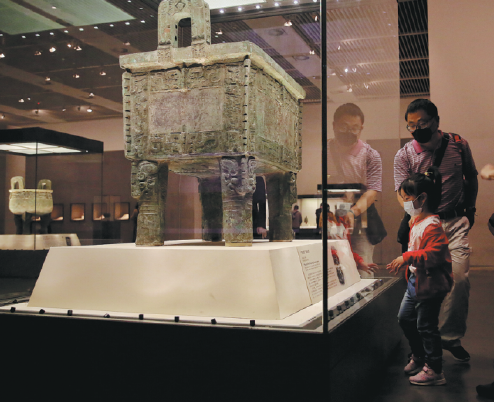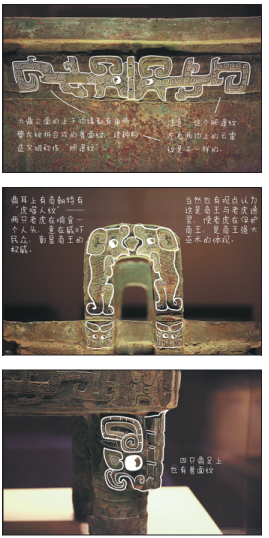Legacy forged in bronze
Modern appreciation is growing for the role the metal has sculpted since ancient China, Wang Qian reports.

Bronze artifacts epitomize China's ancient civilization and rich cultural heritage. They're splendid specimens of art and history for archeologists. But most people view them as mere alcohol vessels, banquet utensils, tools and weapons.
Museum visitors rarely get the full story of bronze-ware patterns, even with signage. It's often difficult to discern if they're characters, lines or images. And it's even trickier to ascertain what they mean.
Zhang Kailiang believes they speak for themselves.
"I'm fascinated by bronze ware and want to explore such mediums as cartoons to help the public appreciate these artworks," he says.
Over 300,000 people follow his Sina Weibo account, where he has posted over 90 illustrations of artifacts and explains their designs, functions and histories.
China has cast bronze for roughly five millennia. Most pieces from around the country's bronze age, around 3,000 years ago, appear to be vessels for ritualistic ancestor worship.
"The wares represent an important chapter in Chinese history," the 29-year-old says.
"This chapter is a treasure waiting to be discovered. Making it accessible to the public can help revive it and diversify its aesthetics."
He began to illustrate ancient bronze works last year using his knowledge to create new visualizations of the ancient wisdom that the pieces volunteer.
Zhang is working toward a master's in archaeology and museology at Renmin University in Beijing.
He earned his bachelor's in game design at the Communication University of China in the capital.
Studying these two disciplines inspired him to combine cartoons with archeology.
He typically sketches the outline of the vague animal pattern seen in a photo of a piece and explains it in simple language.
"Monster masks" are one of the most common patterns from the Shang and Zhou dynasties (c. 11th century-256 BC).
Zhang's drawings emphasize their bulging eyes, flared nostrils and pricked ears.
Take the acclaimed Houmuwu Ding. The square cooking vessel is considered the world's heaviest piece of ancient bronze discovered. It's housed at the National Museum of China in Beijing.
"Monster masks" adorn its top and bottom.
Zhang illustrates the masks as two kui dragons in the same shape but with different motifs.
He also depicts its two handles decorated with two tigers facing each other. Their jaws close around a human head, seeming to aim at intimidating the civilian population and conveying the emperor's authority.
The upper part of the caldron's four feet is also adorned with monster masks above three-cord designs in Zhang's illustration.
During his self-quarantine, he reposted his drawing of the pair of bronze lions that guard the Gate of Supreme Harmony (Taihemen) at the Palace Museum in Beijing.
In his illustration, the "angry" mother lion is holding a cub in her paw. The cub says, "I want to go out". It makes people laugh.
Many netizens describe his cartoons as their first "clear picture of bronze ware".
The National Museum of China not only hosted but also reposted on Weibo his renderings of Tao Ying Ding (eagle-shaped pottery caldron) and Fuhao Tong Xiao Zun (owl-shaped Fuhao alcohol vessels).
Zhang has snapped hi-definition photos and studied documents to give bronze works their deserved recognition.
"China has created bronze ware for over 2,000 years, roughly half of its 5,000 years of civilization," he says.
"This culture and history deserves more research and understanding."
He hopes his cartoons can introduce more ancient artifacts, including jade pieces, lacquer ware and architecture, to help people realize heritage's charm.


Today's Top News
- Judicial reform critical for modernizing governance
- Effective use of investment emphasized
- China's shuttle diplomacy strives to reach ceasefire
- Nanjing Museum's handling of donated art, relics being probed
- Key role of central SOEs emphasized
- New travel program hailed as 'milestone'






























